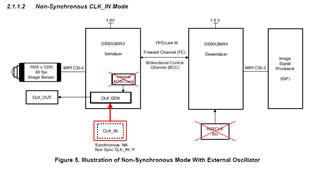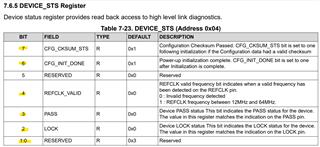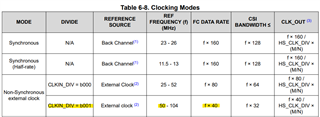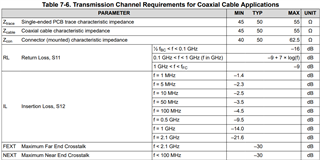Tool/software:
Dear TI Team,
I have designed a custom board using the DS90UB954TRGZRQ1 deserializer and DS90UB953TRHBRQ1 serializer. We are troubleshooting an issue where the I2C back channel communication is not working.
1. Setup & Configuration:
- Deserializer (DS90UB954) and Serializer (DS90UB953) connected via coax cable
- Non-synchronous mode configuration
- 50MHz external clock provided to serializer
- Deserializer has no external clock
Hardware Configuration:
Deserializer (DS90UB954)
- Mode Config: Pulled down (10KΩ)
- IDX Pin: Pulled down (10KΩ)
- PDB (Power Down) Config: Pulled up (10KΩ) with a 10µF bypass capacitor
- i2c pull up 2.2k
Serializer (DS90UB953)
- Mode Config: 75KΩ pull-up, 35.7KΩ pull-down
- IDX Pin: 40.2KΩ pull-down
- PDB Config: 10KΩ pull-up with 10µF bypass capacitor
- I2C Pull-ups: 2.2KΩ
2. Observations & Steps Taken:
- Powered on the setup, but observed no LOCK established on the deserializer.
- Manually configured serializer register:
After this, the deserializer LOCKED.
i2cset -y 3 0x18 0x05 0x13 b - Read deserializer register 0x04: Received 0xCF
- Configured deserializer I2C registers:
i2cset -y 3 0x30 0x4c 0x1 bi2cset -y -f 3 0x30 0x6d 0x7c bi2cset -y 3 0x30 0x58 0x7a bi2cset -y 3 0x30 0x5c 0x31 b - Tried to read back a register on the serializer:
No response received.
3. Issues Faced:
- Deserializer does not lock initially until I manually write to the serializer register.
- Unable to read serializer registers over the back channel.
- Status register 0x04 on deserializer reads 0xCF
4. Questions:
- Is there a necessary initialization sequence for proper link and I2C back channel communication?
- Why is the deserializer not locking initially until I manually configure the serializer?
- Is my I2C configuration sequence correct?
- Any recommended debug steps to check back channel I2C functionality?
Any guidance would be highly appreciated.
Thank you!






